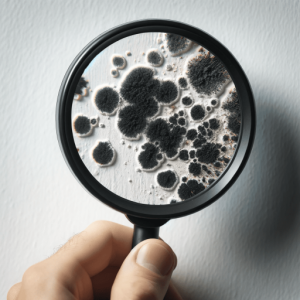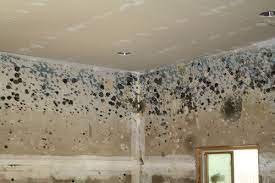From Drips to Doc Visits
Any past or present water damage, such as flooding or roof leaks, can leave behind moisture that can lead to mould and bacterial growth.
How Water Damage Can Unleash Mould Mayhem in Your Home
Water damage – it’s a homeowner’s worst nightmare. Beyond the initial mess and repairs, hidden dangers can lurk in the form of mould growth. This fuzzy foe not only damages your property but can wreak havoc on your health. Let’s delve into the connection between water damage and mould-related health symptoms.
Water Woes: The Perfect Storm for Mould
Mould thrives in damp environments. Any past or present water damage, like a burst pipe, leaky roof, or even persistent condensation on windows, creates the perfect breeding ground. Mould spores, microscopic airborne particles, float around readily attaching to damp surfaces. These spores then germinate and start colonizing, forming those unsightly patches we all dread.
The Mouldy Menace: How it Affects Your Health
While mould itself isn’t inherently dangerous, the byproducts it releases and its spores can trigger a variety of health problems. Here’s how:
- Irritant Reactions: Mould spores and byproducts act as irritants in your respiratory system. This can lead to coughing, wheezing, congestion, and even eye irritation.
- Allergic Reactions: For people with allergies, mould exposure can be a nightmare. It triggers the immune system, causing allergy symptoms like sneezing, runny nose, and itchy eyes.
- Asthma Attacks: If you have asthma, mould exposure can exacerbate symptoms and trigger attacks. Difficulty breathing, chest tightness, and wheezing can become more frequent and severe.
Vulnerable Populations:
It’s important to note that not everyone reacts the same way to mould. However, some groups are more susceptible to experiencing health problems:
- Children: Their developing respiratory systems are more sensitive to irritants.
- People with allergies or asthma: As mentioned above, they’re more prone to reactions.
- People with weakened immune systems: They’re less able to fight off mould-related infections.
Don’t Let Water Damage Become a Health Hazard
The good news is that you can prevent mould growth and protect your health by acting swiftly after water damage:
- Address the Source: First things first, identify and fix the source of the water damage. This could involve repairing a leaky pipe, replacing a damaged roof section, or improving ventilation.
- Dry it Out: Time is of the essence. The faster you dry out the affected area, the less likely mould is to grow. Use fans and dehumidifiers to remove excess moisture thoroughly.
- Clean and Disinfect: For minor mould growth, clean the affected area with a solution of water and bleach or a commercial fungicide. Always wear protective gear like gloves, a mask, and eye protection while cleaning.
- Consider Professional Help: For extensive mould growth or if you’re unsure about the safe removal process, consult a professional mould remediation company.
Remember, a proactive approach is key. By taking swift action after water damage, you can prevent mould growth and safeguard your family’s health. Breathe easy, knowing you’ve created a healthy indoor environment.


